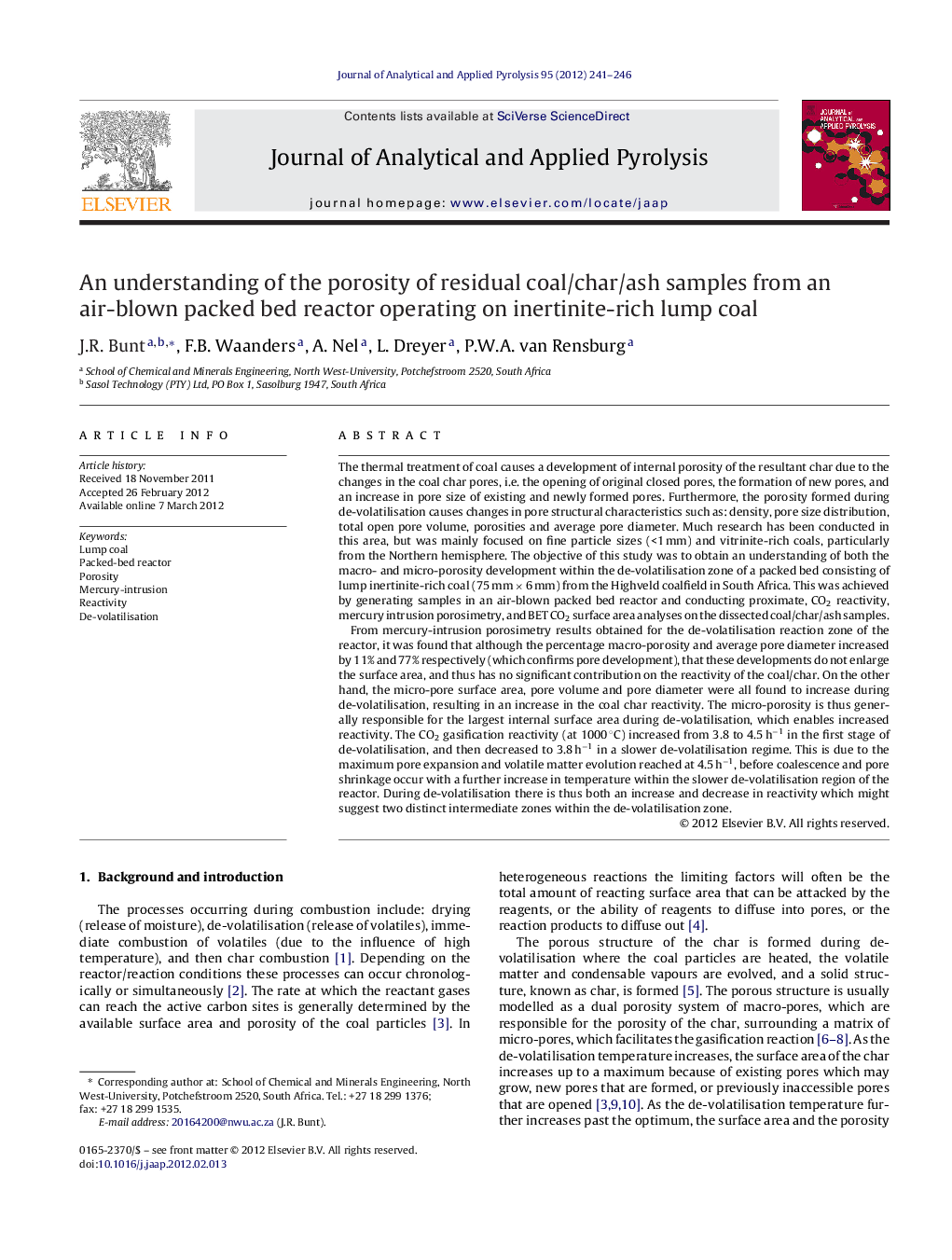| کد مقاله | کد نشریه | سال انتشار | مقاله انگلیسی | نسخه تمام متن |
|---|---|---|---|---|
| 1197407 | 1492982 | 2012 | 6 صفحه PDF | دانلود رایگان |

The thermal treatment of coal causes a development of internal porosity of the resultant char due to the changes in the coal char pores, i.e. the opening of original closed pores, the formation of new pores, and an increase in pore size of existing and newly formed pores. Furthermore, the porosity formed during de-volatilisation causes changes in pore structural characteristics such as: density, pore size distribution, total open pore volume, porosities and average pore diameter. Much research has been conducted in this area, but was mainly focused on fine particle sizes (<1 mm) and vitrinite-rich coals, particularly from the Northern hemisphere. The objective of this study was to obtain an understanding of both the macro- and micro-porosity development within the de-volatilisation zone of a packed bed consisting of lump inertinite-rich coal (75 mm × 6 mm) from the Highveld coalfield in South Africa. This was achieved by generating samples in an air-blown packed bed reactor and conducting proximate, CO2 reactivity, mercury intrusion porosimetry, and BET CO2 surface area analyses on the dissected coal/char/ash samples.From mercury-intrusion porosimetry results obtained for the de-volatilisation reaction zone of the reactor, it was found that although the percentage macro-porosity and average pore diameter increased by 11% and 77% respectively (which confirms pore development), that these developments do not enlarge the surface area, and thus has no significant contribution on the reactivity of the coal/char. On the other hand, the micro-pore surface area, pore volume and pore diameter were all found to increase during de-volatilisation, resulting in an increase in the coal char reactivity. The micro-porosity is thus generally responsible for the largest internal surface area during de-volatilisation, which enables increased reactivity. The CO2 gasification reactivity (at 1000 °C) increased from 3.8 to 4.5 h−1 in the first stage of de-volatilisation, and then decreased to 3.8 h−1 in a slower de-volatilisation regime. This is due to the maximum pore expansion and volatile matter evolution reached at 4.5 h−1, before coalescence and pore shrinkage occur with a further increase in temperature within the slower de-volatilisation region of the reactor. During de-volatilisation there is thus both an increase and decrease in reactivity which might suggest two distinct intermediate zones within the de-volatilisation zone.
► We study the porosity behaviour of lump inertinite-rich coal in an air-blown packed-bed reactor.
► Micro-pore surface area and pore diameter increase during pyrolysis, resulting in an increase in coal/char reactivity.
► Macro-pore diameter increases with an increase in reaction temperature.
► 2 zones of reactivity were identified during de-volatilisation.
Journal: Journal of Analytical and Applied Pyrolysis - Volume 95, May 2012, Pages 241–246